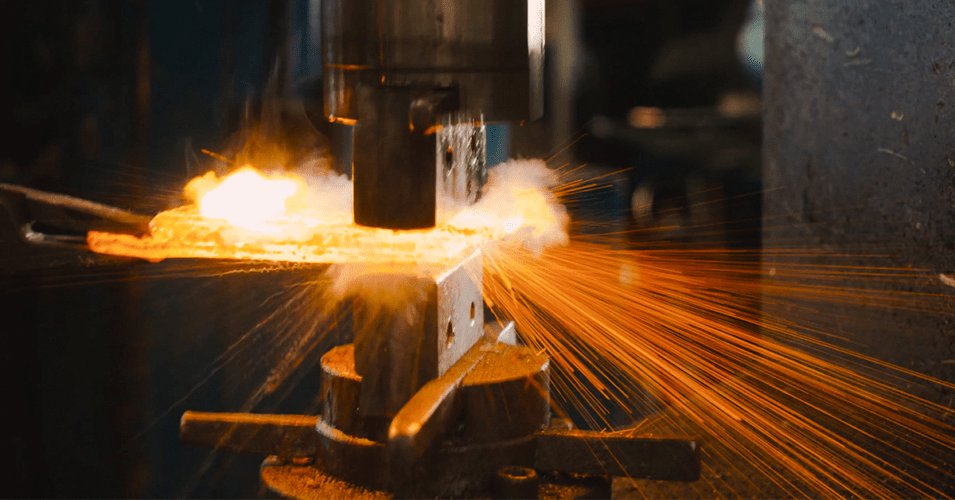Hot forging is a manufacturing process that has been employed for centuries to create strong, durable, and precisely shaped metal components. From automotive parts to aerospace components, hot forging plays a crucial role in various industries. However, the quality and integrity of forged products depend on a multitude of factors, making inspection and testing essential steps in the hot forging process.
In this blog, we will delve into the world of hot forging, exploring the significance of inspection and testing to ensure the highest quality forged products.
Understanding Hot Forging
Hot forging is a metalworking process where a metal billet is heated to a malleable temperature and then hammered or pressed into a desired shape using dies. This process offers several advantages, such as enhanced material strength, improved grain structure, and reduced waste. However, the success of hot forging lies not just in the process itself but also in the stringent quality control measures that accompany it.
Why is Inspection and Testing Crucial in Hot Forging?
- Material Integrity: The quality of the raw material is paramount in hot forging. Inspection helps ensure that the billets used are free from defects like cracks, inclusions, or voids. Any imperfections in the starting material can compromise the final product’s strength and performance.
- Dimensional Accuracy: Forging aims to produce components with precise dimensions. Inspecting the workpiece during and after the forging process guarantees that it meets the specified tolerances. If a forged part deviates from the required dimensions, it may not fit or function as intended.
- Microstructure Evaluation: The heating and deformation involved in hot forging can affect the microstructure of the metal. Inspection techniques like metallography and microscopy allow engineers to assess the grain size, distribution, and uniformity, ensuring that the final product exhibits the desired mechanical properties.
- Defect Detection: Even with careful forging, defects like cracks, laps, and folds can still occur. Non-destructive testing (NDT) methods, such as ultrasonic testing and magnetic particle testing, are used to identify these hidden flaws without damaging the component.
- Mechanical Properties: Forged components often require specific mechanical properties, such as hardness, tensile strength, and impact resistance. Material testing, including tensile testing and hardness testing, ensures that the product meets these criteria.
Inspection and Testing Techniques in Hot Forging
- Visual Inspection: The simplest form of inspection involves visual examination for surface defects, such as cracks, seams, or irregularities. Skilled inspectors can often spot issues with the naked eye.
- Ultrasonic Testing (UT): UT uses high-frequency sound waves to detect internal defects. It is particularly effective in identifying subsurface cracks or voids, making it a valuable NDT method in hot forging.
- Magnetic Particle Testing (MPT): MPT is used to detect surface and near-surface defects. It involves applying a magnetic field and a magnetic powder to the component. Any defects disrupt the magnetic field, making them visible under UV light.
- Radiographic Testing (RT): RT uses X-rays or gamma rays to inspect the internal structure of a component. It’s excellent for detecting internal defects but requires specialized equipment and safety precautions.
- Hardness Testing: Measuring the hardness of a forged part helps determine its strength. Common methods include Rockwell, Brinell, and Vickers hardness tests.
Quality Assurance in Hot Forging
Ensuring the quality of hot forged products is a multifaceted process that involves not only inspection and testing but also process control and continuous improvement. Here are some key points to consider:
- Process Control: Maintaining strict control over parameters such as temperature, pressure, and forging speed is essential to producing consistent, high-quality components.
- Training and Certification: Skilled personnel are crucial for effective inspection and testing. Training and certification programs ensure that inspectors are qualified to detect defects and make accurate assessments.
- Documentation: Proper record-keeping of inspection and testing results is essential for traceability and quality control. This documentation can be invaluable in case of product recalls or warranty claims.
- Feedback Loop: Any defects or issues identified during inspection and testing should be fed back into the production process for improvement. Root cause analysis can help prevent similar problems in the future.
Conclusion
Hot forging is a time-tested manufacturing process that yields strong, durable, and precisely shaped metal components. However, the quality and integrity of these components depend on rigorous inspection and testing. By ensuring the raw material’s integrity, verifying dimensional accuracy, assessing microstructure, detecting defects, and evaluating mechanical properties, hot forging facilities can produce products that meet or exceed industry standards.
Investing in inspection and testing not only enhances the quality of hot forged products but also builds trust with customers, reduces waste, and ultimately contributes to the success and reputation of the forging industry. In the pursuit of excellence, hot forging remains a shining example of how science and craftsmanship combine to shape the world around us.

